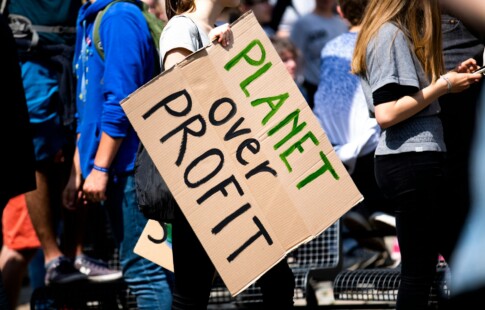
Remediation vs. Restoration: Understanding the Key Differences in Environmental Recovery
We are reader-supported. When you buy through links on our site, we may earn affiliate commission.
In the face of mounting environmental degradation, the terms remediation and restoration are often used interchangeably, yet they represent distinct approaches to managing and repairing ecosystems. Understanding the nuanced differences between these two processes is crucial for professionals and stakeholders involved in environmental recovery. What is remediation vs. restoration?
Remediation and restoration are pivotal in mitigating environmental harm, whether addressing land contamination, water pollution, or habitat loss. However, their objectives, methods, and outcomes are not the same, and recognizing these differences is essential for effective environmental management.
What Is Remediation?
Remediation refers to the process of cleaning up or mitigating environmental pollution to reduce its harmful effects on human health and the ecosystem. It primarily addresses the immediate risks posed by contaminants such as chemicals, heavy metals, or hazardous waste.
The goal of remediation is to neutralize or remove pollutants to safe levels, often making the environment suitable for industrial or residential use, depending on the extent of the contamination.
There are several techniques involved in remediation, each tailored to specific types of pollution:
- Soil remediation: Involves the removal of neutralization of toxic substances from the soil through techniques like bioremediation — where microorganisms break down or decompose pollutants into non-toxic substances — or physical methods like soil washing.
- Water remediation: Techniques such as chemical precipitation, filtration, and adsorption remove pollutants from water sources. This type of remediation is often used in contaminated rivers, lakes, or groundwater.
- Air remediation: Often uses technologies like air scrubbers or biofiltration systems to remove airborne pollutants, improving air quality in industrial areas.
An example of remediation in action is the cleanup of the Love Canal disaster in Niagara Falls, New York, where toxic waste was buried beneath a residential area. After extensive remediation efforts, the site was decontaminated and rendered safe for use, though it did not restore the ecosystem to its original state.
What Is Restoration?
In contrast to remediation, restoration focuses on returning an ecosystem or habitat to its natural state or condition before degradation.
Restoration concerns ecological balance and aims to restore biodiversity, improve habitat quality, and reintroduce native species. It is a more holistic and long-term approach that seeks to remove pollutants and rehabilitate the entire environment.
Restoration can take many forms, including:
- Reforestation: Planting trees and reintroducing native vegetation to rehabilitate forests and prevent soil erosion.
- Wetland restoration: Restoring wetlands involves reestablishing natural hydrology, planting native vegetation, and rebuilding habitats for wildlife. This process helps mitigate flooding and supports biodiversity.
- Stream restoration: Improving water quality and restoring aquatic ecosystems by removing invasive species, replanting riparian zones, and improving water flow.
A prime example of ecological restoration is the Florida Everglades Restoration Project, which involves efforts to restore the natural flow of water to this vital wetland, improve water quality, and enhance biodiversity. The restoration of the Everglades aims to bring back species like the American alligator and restore the ecosystem’s natural hydrological systems.
Key Differences: Remediation vs. Restoration
The fundamental distinction between remediation and restoration lies in their goals and methodologies:
- Goal: Remediation focuses on eliminating or neutralizing pollutants to make an environment safe for human use, while restoration is about revitalizing ecosystems and returning them to a state of ecological health.
- Scope: Remediation addresses specific pollutants and hazards — such as contaminated water or soil — whereas restoration takes a broader, more integrated approach to rebuilding entire ecosystems.
- Outcome: Remediation may not fully restore an ecosystem’s biodiversity or ecological function, but it can reduce environmental hazards. Conversely, restoration aims to reinstate ecological processes, species diversity, and habitat function to pre-disturbance levels.
Both processes are critical in different contexts. Remediation is often the first step in addressing contamination, while restoration is necessary to reintegrate natural systems and enhance biodiversity. In some cases, both approaches may be required — remediation to remove hazardous pollutants followed by restoration to bring back the ecosystem’s health.
Remediation and Restoration: The Importance of Both Approaches
In many environmental recovery projects, remediation, and restoration work together to ensure comprehensive ecological healing.
For example, a polluted river might first undergo remediation to remove toxins like mercury or Polychlorinated Biphenyls (PCBs). Following this, restoration efforts can focus on improving water quality, replanting riparian zones, and reintroducing native fish species. This two-step process allows for a cleaner environment that also supports long-term ecological health.
Additionally, restoration has taken on an added dimension in the context of climate change adaptation. Restoring degraded ecosystems can help sequester carbon, mitigate floods, and protect against the impacts of climate change.
Wetlands, forests, and mangroves are examples of ecosystems that play a crucial role in climate resilience, making their restoration vital for ecological and human well-being.
Remediation and Restoration: Challenges and Future Directions
Despite their importance, both remediation and restoration face significant challenges. Remediation technologies can be costly and may only temporarily address the underlying contamination causes without addressing long-term ecosystem recovery.
Restoration, while crucial, is a time-consuming and resource-intensive process. Restoring ecosystems to their pre-disturbance conditions often requires overcoming barriers such as invasive species, altered hydrology, or land-use changes.
Moreover, the growing demands of urbanization, agriculture, and industrialization complicate remediation and restoration efforts. As land continues to be converted for human use, balancing development with environmental recovery becomes increasingly challenging. This is particularly evident in rapidly urbanizing areas where space for restoration is limited.
Technological, scientific, and policy advancements are essential to overcoming these challenges. Geospatial mapping, remote sensing, and data analytics can help monitor environmental health and guide remediation and restoration efforts more effectively.
Furthermore, public-private partnerships and collaborative efforts between governments, environmental organizations, and local communities are crucial to scaling up restoration efforts globally.
A Balanced Approach to Environmental Recovery
The environmental recovery process of remediation and restoration each plays distinct yet complementary roles in addressing the environmental challenges of the modern world.
While remediation provides the necessary cleanup of contaminated environments, restoration seeks to rebuild and reintroduce biodiversity and ecological balance. As global awareness of environmental degradation grows, integrating both strategies will be vital in ensuring ecosystems are cleaned and restored to a healthy, resilient state.
The continued success of these efforts depends on evolving technologies, informed policy-making, and global cooperation. Understanding the nuanced differences between remediation and restoration will help ensure that each approach is applied effectively to meet today’s pressing environmental challenges.
Share on
Like what you read? Join other Environment.co readers!
Get the latest updates on our planet by subscribing to the Environment.co newsletter!
About the author
Maria Visser
Maria serves as the Assistant Editor of Environment.co. A true foodie and activist at heart, she loves covering topics ranging from veganism to off grid living.





